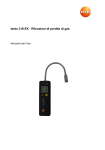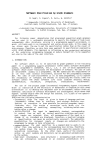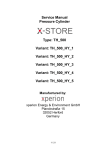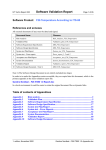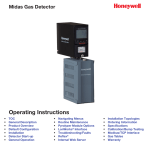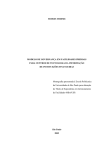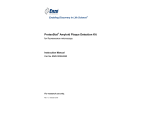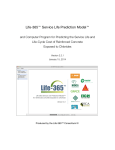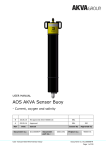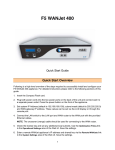Download View article - British Automatic Fire Sprinkler Association
Transcript
PAS 95:2010 Hypoxic Fire Prevention Systems for Occupiable Spaces Specification THIS IS A WORKING DRAFT AND MUST NOT BE REGARDED OR USED AS A PAS This draft is issued to allow comments from the Steering Group. No copying is allowed, in any form, without written permission from BSI except as permitted under the Copyright, Design and Patent Act 1988 or for circulation within a participating organization and/or its membership network for briefing purposes. Electronic circulation is limited to dissemination by email within such an organization and its members. Any formatting in this draft is to aid readability and does not reflect the final format of PAS 95 © BSI 02 June 10 Contents Hypoxic Fire Prevention Systems for Occupiable Spaces Foreword Figure 1 – Basic Hypoxic air (HA) systems 1 Scope 2 Terms and definitions 4 Installation and installation equipment 5 Supplier and installer 6 System commissioning, acceptance testing and documentation 7 Maintenance and testing 8 Health and Safety Annex A (Normative) Ignition limiting oxygen threshold testing Annex B (informative) Health Considerations Table B.1 – Atmospheric conditions (%O2 at sea level, altitude, atmospheric pressure at that altitude, and the equivalent oxygen partial pressure for both) according to ICAO standard atmosphere and the time of useful consciousness for un-acclimatized persons. Table B.3 – Risk classification of hypoxia and actions for safety precaution Annex C (informative) Health & Safety Assessment Stage 1: Questionnaire for persons likely to enter a Hypoxic Environment Table C.1 – FAQs Figure C.1 – Class 1 Figure C.2 – Class 2 Figure C.3 – Class 3 Figure C.4 – Class 4 Bibliography -i- 1 ii v 7 7 11 12 13 14 14 15 19 19 20 21 21 23 24 25 26 26 © BSI 02 June 2010 Foreword This Publicly Available Specification (PAS) was sponsored by the following companies: AcecoTI, Colorado Altitude Training (CAT), COWI, FirePASS Europe, Hypoxic Technologies, LPG UK, Opsys, Prevenex Europe, and Wagner Group GmbH - all members of the Summit Air Institute for Preservation, Health and Safety (SAIPHS). Its development was facilitated by the British Standards Institution (BSI). It came into effect (date of publication). Acknowledgment is given to the following organizations that were involved in the development of this PAS as members of the Steering Group: • COWI • Firepass Corporation • Gotland University • LPG Fire • Prevenex • Smithsonian Institution • The Altitude Centre • Wagner Group This PAS is published by BSI which retains its ownership and copyright. BSI reserves the right to withdraw or amend this PAS on receipt of authoritative advice that is appropriate to do so. This PAS will be reviewed at intervals not exceeding two years, and any amendments arising from the review will be published as an amended PAS and publicized in Update Standards. This PAS is not to be regarded as British Standard. It will be withdrawn upon publication of its content in, or as, a British Standard. The PAS process enables a specification to be rapidly developed in order to fulfil an immediate need in industry. A PAS must be considered for further development as British Standard, or constitute part of the UK input into the development of a European or International Standard. Information about this document Product certification. Users of this PAS are advised to consider the desirability of third-party certification of product conformity with this PAS. Users seeking assistance in identifying appropriate assessment bodies or schemes may ask BSI to forward their enquiries to the relevant association or to SAIPHS at [email protected]. Use of this document It has been assumed in the preparation of this PAS that the execution of its provisions will be entrusted to appropriately qualified and experienced people, for whose use it has been produced. Presentation conventions The Provisions of this PAS are presented in roman type. Its requirements are expressed in sentences in which the principal auxiliary verb is "shall". Its recommendations are expressed in sentences in which the principle verb is “should”. - ii - © BSI 02 June 2010 Commentary, recommendations, explanation and general informative material is presented in smaller italic type, using the heading NOTE, and does not constitute normative element. Contractual and legal considerations This publication does not purport to include all the necessary provisions of a contract. Users are responsible for its correct application. Compliance with a PAS does not confer immunity from legal obligations - iii - © BSI 02 June 2010 Introduction Hypoxic Fire Prevention Systems provide a means of preventing fires from occurring in contrast to the conventional approach of accepting the risk of fire and then attempting to detect it and extinguish it. Hypoxic Fire Prevention Systems have application in those locations where a fire is not acceptable for commercial, operational, safety or cultural reasons. Hypoxic Fire Prevention Systems utilise air with an oxygen level that is healthy for the majority of people, yet is insufficient to allow a fire to start. Normal air is a mixture of oxygen and nitrogen together with small quantities of other elements. Oxygen is the critical element which supports both life and combustion. When the oxygen content is intentionally lowered for special applications, the resulting gas is called hypoxic air or low-oxygen air. Within limits and with appropriate controls, reduced oxygen concentration atmospheres, or hypoxic air atmospheres, can be tolerated by humans. When properly controlled to maintain predetermined oxygen concentrations, these atmospheres can provide adequate oxygen for human occupation but insufficient oxygen for common materials to ignite or burn. Hypoxic air systems using similar oxygen levels are used by athletes for physical fitness, training and rehabilitation and in medical research. A relatively new application of this principle is for fire prevention. This PAS addresses the system functionality for such fire prevention systems and provides guidance on the Health & Safety implications for people occupying spaces (for short or long durations) protected from fire by hypoxic air. Reducing the oxygen concentration of the atmosphere of an enclosed area reduces the fire risk by either inhibiting ignition, eliminating flaming or retarding combustion. Hypoxic fire prevention systems have been installed worldwide to provide an increased level of fire protection for high value installations and irreplaceable artefacts. Protected facilities include computer facilities, bank vaults, library storage, deep freeze storage, national treasures, archives, and warehouses. Hypoxic atmospheres can be established either with a hypoxic air venting system or a nitrogen injection system. Both systems create an environment with a reduced oxygen level but differ in the amount of oxygen contained in the air stream that they produce. A generic arrangement is shown in figure 1. Both systems are recognised as efficient methods of creating continuous hypoxic air environments for fire prevention. Once established, the oxygen concentration is monitored and supervised constantly. Hypoxic systems are passively present at all times to prevent potential fire incidents for causing damage, evacuation or repair downtime. Hypoxic systems do not depend on components activating at the time a potential fire risk occurs. When the system is de-activated for service or because of power supply or other failure, the fire preventing atmosphere typically remains in place. In larger protected volumes the period of extended protection may amount to a day or more. This ‘reservoir effect’ allows time to repair or for provisional measures to be established so protection can remain uninterrupted. However, taken in isolation the hypoxic generators are active components with mean-time-before-failure (MTBF) characteristics that need to be considered in order to sustain the long term effectiveness of the system. - iv - © BSI 02 June 2010 Figure 1 – Basic Hypoxic air (HA) systems Key 1 2 3 4 5 6 7 Control panel and power supply Smoke detector Oxygen sensor Strobe light (where applicable) Sounder (where applicable) Protected space – Hypoxic air: 13-17 Vol %O2 Ambient air 8 Compressor and dryer 9 10 11 Water/oil separator and filters Hypoxic air generator (air splitting unti) Valve 12 13 Hypoxic air in Nitrogen Injection Systems: Air of >89 Vol % N2 Hypoxic Air Venting Systems: Air of 10-15 Vol % 02 Oxgen enriched air out 14 Access to protected space FDAS = Fire Detection and Alarm System BMS = Building Management System (option) Normal air contains approximately 21% oxygen. An environment suitable for occupation by people is one in which the oxygen percentage is such that humans can operate at a normal level of activity for sustained periods of time, without the aid of breathing apparatus. The level of physical activity being undertaken in the environment and the actual altitude of the location itself will impact on the oxygen percentage necessary for the environment to be considered suitable for occupation. In general, hypoxic air fire prevention systems are suitable for low to moderate levels of physical activity at altitudes up to 500m. -v- © BSI 02 June 2010 Hypoxic air generators can have dedicated pipe work to supply the protected spaces or can be combined with the air conditioning system, resulting in a ventilation system providing fire safety as well as the control of humidity and temperature. Hypoxic air fire prevention systems are suitable for use in enclosed volumes where typical fuel load contents are handled or stored. The field of application of this technology can include: a) food storage b) cold storage c) clothing storage d) ICT rooms e) electrical utility rooms (except rooms with oil-filled electrical apparatus) f) archives g) library or museum artefact preservation h) bank vaults i) industrial equipment rooms j) control rooms k) research laboratories - vi - © BSI 02 June 2010 1 Scope This Publicly Available Specification (PAS) specifies the terminology, system requirements and interfacing requirements for fire prevention systems that utilize air splitting generator systems to provide permanent hypoxic air (HA) environments for ignition prevention and combustion control, in habitable enclosed volumes where the design, installation and maintenance requirements are all determined by the system design entity. This PAS is not applicable in areas where: a) explosive mixtures of gases, particulates and liquids are present; b) reactive metals, cellulose nitrate, gun powder, metal hydrides, hydrazine, and other chemicals capable of auto-thermal decomposition are handled or stored; c) sufficient air leakage control cannot be achieved; d) sustained ignition sources (e.g. oxy-acetylene burners) are present. NOTE 1 This PAS is not applicable for fire extinguishing systems covered by BS EN 15004-1 for non-habitable atmospheres. NOTE 2 This PAS does not attempt to conduct a full fire risk assessment. 2 Terms and definitions For the purpose of this PAS, the following terms and definition apply. 2.1 hypoxic air (HA) oxygen reduced air with oxygen content under 20.94 Vol.-% where the partial pressure of oxygen has been deliberately reduced for the purposes of preventing ignition and retarding combustion of common materials 2.2 hypoxic environment environment containing hypoxic air 2.3 hypoxic air fire prevention system system capable of producing an hypoxic environment 2.4 hypoxic air venting system hypoxic air fire prevention system which generates hypoxic air containing 10% or more oxygen by volume 2.5 Hypoxia (mild hypoxia) Hypoxia means less oxygen. Mild hypoxia may occur when the worker is exposed to a partial pressure of oxygen which is less than normal. NOTE The UIAA MedCom has defined the term “mild hypoxia” as any kind of exposure where SaO2 is ≥90% www.theuiaa.org/medical_advice.html. 2.6 nitrogen injection system hypoxic air fire prevention system which generates nitrogen-enriched air 2.7 occupiable space hypoxic environment where humans can operate at a normal level of activity for short or extended durations (as appropriate) without the aid of personal protection 2.8 hypoxic air generator component of a hypoxic air fire prevention system that splits air on a molecular level to generate a mix of oxygen, nitrogen, carbon dioxide and water NOTE Air is usually split using a molecular sieve (membrane, pressure swing adsorption (PSA), or vacuum pressure swing adsorption (VPSA)) 2.9 control panel component that receives and sends signals to other components of the system, including the Building Management System (BMS) (optional) and the Fire Detection Alarm Panel (FDAP) (optional), with control, monitoring and measurement functions, and alarm and annunciation features in order to maintain the required oxygen concentration level in the protected area 2.10 ignition limiting oxygen threshold oxygen concentration required for limiting ignition and preventing sustained flaming combustion of materials when tested in accordance with specified standard testing procedure NOTE see Annex A for the test method. 2.11 design oxygen concentration level oxygen concentration in Vol- % used as design basis for an hypoxic air fire prevention system specification, determined by subtracting not less than 1 Vol- % safety factor from the lowest tested ignition limiting oxygen threshold of materials likely to be found in, or as a part of the fabric of, the protected space 2.12 oxygen monitoring system (OMS) automatic electronic device capable of measuring environmental oxygen content within an hypoxic environment to an accuracy of ±0.4Vol- % accuracy or better and providing this data to a controller to maintain the environmental oxygen content in the protected compartment at a programmed safe level NOTE OMS can be equipped with chemical, electrochemical, infrared, ultrasonic or other types of sensors allowing reliable oxygen monitoring. 2.13 protected space the enclosed volume containing the hypoxic environment 2.14 flushing process during which the hypoxic air system is shut down and the air in the room is replaced with fresh air. (After which it would be normal to switch the system back on to replace the air with fresh hypoxic air) NOTE Certain stored materials may give off obnoxious gases which if allowed to accumulate beyond a certain concentration may give rise to unacceptable levels in a protected space and flushing should be used to replace the air. 2.15 hold time the period of time that the oxygen level in a protected space remains at or below the design oxygen concentration level after the input from the hypoxic air prevention system has been disabled. 2.16 maintenance technical, administrative and managerial actions during the life cycle of an item intended to retain it in, or restore it to, a state in which it can perform the required function 2.17 maximum leakage (Maximum Inward Leakage) flow of ambient (non hypoxic air) into the protected space resulting from structural leakage and access events, that is used by the system designer to determine the system sizing. NOTE Maximum leakage is often expressed as a percentage of the volume of the protected space per hour 2.18 oxygen alarm level an oxygen percentage level that is at the extreme of the allowable range of oxygen levels specified for fire protection of the protected space NOTE This applies to both high and low oxygen alarm levels. 3 System 3.1 Planning The planning process shall realize two primary objectives. • To create a design that is effective in preventing fire • To create an environment that does not pose a risk to persons 3.1.1 Provisions The plan for the hypoxic air fire prevention system shall include provision for: a) coordination and integration with the fire safety strategy for the building and protected space; b) integration with other systems within the building and with the building itself; c) modifying the building construction by sealing or other techniques to enable retention of the hypoxic environment so as to meet the maximum inward leakage of external non-hypoxic air as specified by the system designer; d) the frequency of access events by personnel and interaction with other ventilation and environmental control systems in relation to achieving the overall inward leakage specification; e) constructing the protected space in such a way that it presents a barrier to fire spreading from an adjacent (non-protected) space for a time period determined by local regulations or the building fire safety strategy; f) functions occurring in the protected space. Where stored materials may give off odours or gasses that are undesirable the design shall recommend some form of flushing at recommended intervals; g) in all fields of application, determining the required oxygen level in the protected space by the types of materials to be found in it. This required oxygen level, in conjunction with the duration of time people will spend in the protected space and the level of activity undertaken whilst in there, shall be reflected in the recommendations of the associated Health & Safety policy. 3.1.2 Performance Impacting Factors The system design and implementation shall take full account of all factors likely to impact on the effective performance of the system, includinga) building general occupancy and uses; b) interaction with, and implementation into, the structure fire protection strategy; c) protection, conservation and preservation and business continuity requirements; d) risks of fire in the building and the protected compartment; e) building construction compartmentation; f) the impact of embedded/encapsulated oxygen in packaging or other materials; g) types of oxidizing reactions, flaming and smouldering, to be prevented; h) access control to the protected space; i) different injection/circulation methods; j) detection of non-oxidizing smouldering or pyrolyzing processes on which the hypoxic air has no or insufficient impact requirements, and the possible need to provide an aspirating smoke detection system; k) applicability of using an appropriate ignition limiting oxygen threshold or the need to conduct testing to establish an oxygen concentration design level; l) considerations related to discarding high oxygen by-product to atmosphere; m) acoustic requirements inside and outside the protected space; n) management of compressor heat, condensate drainage. NOTE 1 Where a decision is taken to exclude any of the above items, justification shall be provided in the design documentation. NOTE 2 It is recommended that an auditor be engaged, post design and prior to installation, when the hypoxic air fire prevention system design is being evaluated to: • assess the risk parameters, hazards and activities • determine feasibility for installation of the fire prevention system for the project • review the system design specification and drawings prior to installation 3.2 System specification The design specification for the hypoxic fire prevention system shall include: a) total volume of protected space, the number and shape of rooms comprising that protected space; b) contents of each room and the associated design oxygen levels (maximum and minimum); c) design leakage, together with the method of assessment; d) type and placement of oxygen sensors; e) method to ensure adequate mixing of the environment; f) types, pressure rating and sizes of distribution piping; g) flow volumes and compressor power consumption and duty cycle; h) time to achieve the design oxygen level(s) from start up; i) holding times of each room under power fail conditions; j) back up power time period (if any) for the control system; k) alarms and status outputs – local and remote; l) types/sizes of control and sensor cables; m) ventilation/cooling requirements/space for the compressor system; n) access events and size of access opening; o) system data logging capability and communications protocol to external systems; p) oxygen level validation technique (minimum once per day); q) techniques employed to ensure safety of personnel; r) dimensions and weights of major components; s) techniques to avoid unauthorised adjustment; t) installation instructions and commissioning procedures for the system; u) operational and servicing requirements (including records required). 3.3 Design oxygen concentration level The design oxygen concentration level shall be set according to the results of the ignition limiting threshold test detailed in Annex A. NOTE 1 Alternative tests of the materials to be contained in the protected area can be conducted in accordance with international standard methods for measuring ignitability using hypoxic air atmosphere generated by a specific system for a specific application or, if agreed to by the user and local authority, a performance-based approach for specific applications may be used. However, in the event of challenge or dispute the reference test method in Annex A shall apply. NOTE 2 A performance-based approach sets the agreed performance levels or acceptable limits for the materials and compartment fire properties and conditions including heat release rate, smoke emission, or smoke obscuration, ignitability, flame spread, flash over, etc. NOTE 3 When setting the design oxygen concentration level, consideration should be given to the balance between ignitability of materials and health considerations of those working in the protected area (see Annex B). 3.4 Indoor air climate The design process for hypoxic air fire prevention systems shall take account of local and user indoor air climate requirements. NOTE Hypoxic air fire prevention systems can be installed as a component of the air conditioning system when the performance based indoor air climate regulations and codes are applied. 3.5 Flushing The system shall be designed so that in circumstances when flushing using non hypoxic air is necessary, the system can be taken off line. The system designer shall provide instructions to the effect that the system should be taken offline during flushing and alternative fire protection methods should be put in place before the hypoxic environment is removed. However, because of the loss of fire protection, the designer shall provide instructions stating that flushing should be avoided as far as possible. NOTE The frequency of flushing (if any) will be dependent on the material stored and so no timetable can be provided in this specification. 3.6 Performance 3.6.1 Monitoring The system shall be designed so that it is capable of monitoring performance on a continual basis. Performance indicators shall be transmittable to monitoring and control points, e.g. the fire alarm panel and the building management systems (BMS), as required, and shall contain as a minimum: a) Oxygen level as indicated by every sensor b) High and Low oxygen alarm conditions c) System Fail alarm 3.6.2 Data retention Data shall be stored for a minimum of 3 months with a data resolution at least every 10 seconds (as required by the user). A method shall be provided to retrieve information for analysis without compromising existing storage or continuing data storage. Where this storage is not provided by external systems such as the building management system, then the hypoxic fire prevention system shall incorporate storage of this information. 4 Installation and installation equipment 4.1 Equipment The system designer shall provide instructions that the installation of hypoxic air fire prevention systems shall include: a) air splitting unit (e.g. membrane, pressure swing absorption); b) control panel, wiring and power supply; c) oxygen monitoring system; d) non-combustible pipes and/or ducting for feeding hypoxic air into the protected space and for disposing of the high oxygen air stream into the atmosphere; e) pipes from compressor to generator module and hypoxic air distribution pipes within the protected space; f) compressor and dryer (note a dedicated system is recommended); g) silencer system(s); h) The system designer shall provide instructions that the following are optional in the installation of hypoxic air fire prevention systems; i) wiring to the fire detection and alarm control panel, to the building management system control panel and for remote displays and indications; j) water/oil separator; k) pipes for clean water drainage; NOTE 1 Electrical and mechanical equipment used in hypoxic air fire prevention systems could be subject to national regulations. NOTE 2 BS 6266 gives recommendations for the protection of electrical equipment installations and could be useful to implement in relation to hypoxic fire protection systems. NOTE 3 Piping used for non-hypoxic air could be subject to national regulations. 4.2 Installation Specification The system designer shall provide the hypoxic air fire prevention system installation specification and it shall include the following: a) The protected space shall, unless the approved fire safety design of the building prescribes otherwise, be separated by fire rated barriers consistent with the fire protection design of the structure but having not less than 1 hour fire resistance rating,. b) Temperature, ventilation and access control provisions of the protected space shall be verified. c) Smoke control systems shall not be installed in protected spaces. d) The signalling protocol and remote alarm indications from the hypoxic air fire prevention system to other management and control systems shall be defined prior to installation. e) A system for collection and drainage of the condensation from the compressor system shall be provided. f) Adequate ventilation/cooling arrangements for the compressor and dryer shall be provided. g) Where the hypoxic air fire prevention system is integrated into an air conditioning system utilising remote air handling units (AHUs) that serve the protected space, particular attention shall be paid to the air tightness of the ductwork and the AHUs. NOTE Where possible, arrangements should be made to utilise the heat generated by the process of compression 4.3 Control Panel 4.3.1 All control panel alarms shall be available to connect to a remote central supervisory centre or manned central station. 4.3.2 The panel shall incorporate a standard communications protocol to allow effective interfacing with other fire and building management systems and for the collection and storage of system performance data. 4.3.3 The system designer shall ensure the control panel includes the following, as a minimum: a) the oxygen level of each individual sensor; b) alarm indications at passing thresholds for oxygen alarm levels measured on any of the oxygen sensors in the protected area; c) a general fault status; d) an online status with deactivation switch; e) controls for deactivation of the system; f) control of the range of oxygen percentage acceptable for each room in the protected space and the associated alarms; g) functionality for continued operation in the event of a power failure. 5 Supplier and installer 5.1 Training The designer shall recommend that installation personnel of a hypoxic air fire prevention system are competent in the following areas: a) technical capabilities of the hypoxic air fire prevention equipment; b) workplace health and safety regulations; c) pipework and cabling requirements; d) compressor installation and operational requirements; e) technical audit of the design and installation; f) knowledge of third-party accreditation, certification schemes related to installation. NOTE 1 The designer should provide information relating to training programmes for installation personnel as well as third party accreditation and certification schemes related to installation. 5.2 Records The system designer shall provide instructions that the supplier and installer companies shall maintain and be able to provide, if requested, formal training records for all staff involved in the installation and maintenance of hypoxic air fire prevention systems. NOTE An audit can be requested by anyone of the following: employer, building operator, local authority, insurer of the protected premise. 6 System commissioning, acceptance testing and documentation 6.1 Initial system checks 6.1.1 The designer instruct that the Commissioning Engineer/Lead Installer shall carry out a full visual inspection of all system components shall be carried out on completion of installation NOTE The designer should recommend that the Commissioning Engineer/Lead installer to test all mechanical and electrical installations in accordance with the relevant local standards for the country of operation. 6.1.2 The system designer shall instruct that system performance tests (in accordance with Annex A) are conducted to determine effective operation in the protected space. 6.1.3 The system designer shall instruct that all the inputs and outputs of the system control panel are tested to confirm performance and functionality. NOTE Local regulations may also require the presence of local fire authorities and/or an insurance representative. 6.2 Commissioning The system designer shall recommend that the user/building owner (or a representative thereof) is present at the initial system commissioning and re-commissioning after any down-time; 6.2.1 The system designer shall instruct that commissioning procedures and records are maintained in accordance with the requirements of manufacturers of components used in the system and these shall be submitted to the building owner. 6.3 Final Documentation 6.3.1 The system designer shall instruct that once the installation is complete all documentation is provided to the user by the installer and includes the following, as a minimum: a) an archive of site works activities and documentation, maintained by the installer, detailing the paper and/or electronic trail providing proof of compliance with this standard; b) a completion document confirming the performance parameters of the system signed by the commissioning engineer, and installer is provided to the user, building owner and/or operator; c) operation and maintenance manual; d) installation report (as detailed in 7); e) drawings showing hypoxic fire prevention system layout and zones; f) integrity (air leakage) monitoring and testing procedures of the premises; g) commissioning data; h) manufacturer's declaration of conformity; i) guarantee documentation; j) equipment datasheets with installer and manufacturer contact details; k) a statement that no modifications are to be made except by an approved installer and if modifications are made, a new system commissioning report, and updated declaration of conformity is issued and documented. NOTE Where required this document should be signed by the insurer and the local authority having jurisdiction. 6.3.2 Operation and maintenance manual The system designer shall approve the Operation and Maintenance manual provided by the system installer and ensure it includes the following as a minimum: a) the date of installation, details of the Lead Installer, commissioning engineer, drawings and descriptions of the system operation and critical control functions; b) maintenance procedures for all system components; c) contact details for warranty or technical support; d) recommendations for alternative fire protection when the system is likely to be shut down or inoperable for periods that extend beyond the hold time of the protected space, including notifying insurance and fire authorities; e) action to be taken in the event of system fail alarm; f) recommendations regarding keeping a log book recording all system activity; g) advice on Health & safety procedures for personnel occupying the protected space as detailed in 6.3.3 and Annexes B and C. 6.3.3 Installation report The system designer shall instruct the installation engineer to produce a report once the system is installed, which includes: a) risk parameters considered for the application of the fire prevention system; b) hazards and activities in the protected space and contiguous areas; c) hypoxic air fire prevention system specification and installation; d) system performance tests conducted in accordance with Annex A. 7 Maintenance and testing 7.1 Monitoring performance The system designer shall instruct that: a) system performance is monitored according to the indicators specified in 3.6.1 and 3.6.2. b) this information is transmitted to the fire alarm panel and/or the BMS, where applicable. NOTE The system designer shall recommend that system performance records are retained for a period of at least 3 months. 7.2 Servicing The system designer shall provide a service manual containing the following instructions: a) equipment is to be serviced according to the designer’s servicing manual; b) manufacturer’s recommendations for servicing and testing; c) compressors are to be checked weekly by internal maintenance staff; d) if pressure vessels are used, servicing instructions in accordance with the regulations for the country of operation; e) air locks and other critical points of potential leakage are to be inspected on a quarterly basis. 8 Health and Safety 8.1 Working in hypoxic environments 8.1.1 Procedures 8.1.1.1 The system designer shall instruct that Health and safety procedures are established for premises where hypoxic fire prevention systems are installed and that training is provided to ensure users of the protected space and surrounding areas are aware and trained in implementing these procedures. NOTE Procedures should be developed with consideration to the recommendations in Annex B and C for health assessment. 8.1.1.2 The system designer shall instruct that health and safety procedures address: a) health assessment of all persons entering or visiting the protected space in accordance with; b) safety procedures for compressors, ventilation and power supply equipment; c) notification of emergency and medical personnel; d) awareness training on how to handle exposure in the event of accidental releases of high concentrations of nitrogen (nitrogen injection systems only). NOTE Annex B and C provide recommendations for health and safety procedures and assessments. 8.1.2 Health and safety records The system designer shall instruct that records are kept on all incidents occurring in the protected space. 8.1.3 Health and safety information The system designer shall instruct that in occupiable spaces where fire prevention systems are installed signs are posted notifying personnel of the presence of such systems and authorization requirements for accessing the area. NOTE Electrical Safety: The system designer shall draw attention to the relevant national wiring and electrical installations standards for the country of operation. 8.1.4 Risk assessment The system designer shall perform a risk assessment to ascertain the need for additional oxygen monitoring inside the protected space, the generator room and contiguous areas. 8.2 High pressure piping The system designer shall instruct that all high pressure piping installations are in accordance with the national or international mechanical standards for high pressure air line systems and components. Annex A (Normative) Ignition limiting oxygen threshold testing A.1 Principle Materials are heated with a flame in a hypoxic fire preventative environment to assess the ignition limiting oxygen threshold. NOTE The test method in VDS 3527:1997 Annex A5.2 may be used as an alternative to the this test. However, in the event of challenge or dispute the test method given here shall apply. A.2 Test facility A.2.1 The test facility shall consist of a 100 m2 space built to BS ISO 14520-12006 specifications fitted with an hypoxic air supply system and an air lock in front of the entrance (see A.2.3). All penetrations by test set up equipment, pipes, measurement cables and sensors shall be sealed with non-combustible foam sealants. There shall be no significant draft in room and control of the flame torch shall be remote with no access to the space during the test. NOTE 1 Under these conditions this test may be performed in situ at much larger volumes as well, to account for large components in storage or special arrangements. NOTE 2 Alternatively, spaces with dimensions no less than 10 m3 may be used provided oxygen concentration by the mean of the two lowermost oxygen sensor readings (see A.5.2) are within deviation of +/- 0.1 % during test. NOTE 3 The hypoxic air generation system may be a standard equipment set up at the testing facility or it may be a proprietary system that the user is assessing under standardized testing conditions. A.2.2 The test facility shall be fitted with smoke extractor fans. A.2.3 The test facility shall be fitted with opposing observation windows to allow observation of the fire test. A.2.4 The test facility shall be equipped with an adjoining airlock vestibule of equal height and min 2.5 m width x 1 m length to limit air leakage. It shall be equipped with doors and observation windows that are sealed with smoke sealant. Figure A.1 – Figure title Key 1 2 3 4 5 Vertical test specimen Horizontal test specimen Torch flame 3D adjustable fixing bracket Scale 6 7 Table Vertical support frame A.3 Test specimens The following lists of plastic and cellulose materials are suitable for use as test specimens. Plastics in the form of packaging materials or product components: a) PE-HD; b) PP; c) PMMA; d) ABS; e) PVC (cable); f) PE-LD (packaging foil). Cellulose in the form of packaging material or product components: a) Fir wood (pallet wood, untreated) b) Corrugated board (packaging, brown untreated, plain); c) Cardboard palletized (packaging, brown, untreated, plain); d) Paper (writing paper, 80g/m2, white, untreated); e) Treated paper (newspaper); f) Cotton Towel. NOTE 1 Materials not listed here may also be used for testing. The list is a guide only and not exhaustive. NOTE 2 The following materials are not suitable as test specimens: a) explosive mixtures of gases, particulates and liquids; b) reactive metals, cellulose nitrate, gun powder, metal hydrides, hydrazine, and other chemicals capable of auto-thermal decomposition. A.4 Test sample The sample shall be a batch of identical test specimens. A.5 Apparatus A.5.1 Oxy-acetylene burner, with the ability to provide flaming exposure, regardless of the oxygen concentration or other room climate conditions. A.5.2 3 oxygen sensors, positioned within the test facility at heights of 0.2 m, 1.2m and 2.2m positioned in a vertical line, 1000 mm away from the test sample at the opposite side to the torch. A.5.3 Calibrated scale for continuous loss of weight logging A.5.4 Thermocouples. installed inside the room to measure temperatures A.5.5 Data logging equipment. installed to sample readings throughout the test A.5.6 Video recording equipment, A.5.7 Heavy gauge steel wire mesh frame, installed inside the room to support vertical samples A.5.8 Heavy gauge metal frame table with wire mesh, installed inside the room to support horizontal samples A.5.9 Heavy gauge metal bracket to support oxy-acetylene burner and remote operation of the torch A.6 Test Procedure A.6.1 Position the video equipment (A.5.6) to record each test for review after completion. NOTE A review may be necessary for closer inspection after the test to establish whether there is smoking or not. A.6.2 Fill the test facility with hypoxic air so that the oxygen level is at the desired concentration. A.6.3 Place the specimen on the metal frame table and fix in horizontal position (A.5.8). A.6.4 Record oxygen levels of oxygen sensors (A.5.2) using the data logging equipment (A.5.6). A.6.5 Fix the oxy-acetylene burner (A.5.1) on the frame (A.5.9) to hit a lateral side of test specimen. A.6.6 Expose the test specimen to a flame set at transition stage from orange to blue color for 180 s. A.6.7 Observe whether the test specimen ignites A.6.8 Record loss of weight to the specimen during the test using the calibrated scale (A 5.3). NOTE It could be useful to produce a graph to chart weight loss through the tests. A.6.9 Wait 60 seconds, observing whether the specimen continues to produce flames, independently of the burner and assess the continuously recorded loss of weight per time of the test specimen. A.6.10 Place a new specimen from the same b and fix to vertical position on metal frame (A.5.7) A.6.11 Fix the oxy-acetylene burner at an angle of 90 degrees towards the specimen with the flame outlet 200 mm from a lowermost corner, approximately 25 mm inwards from the edge of specimen. A.6.12 Repeat A.6.3 to A.6.7. A.6.13 Repeat the tests at least twice more for each sample and until the test criteria for limiting ignition oxygen threshold is established by lowering the oxygen concentration by increments of 0.5% or as agreed otherwise. A.6.14 The air inside the test room shall be changed after every test in order to keep conditions consistent. NOTE Local health and safety and environmental regulations for handling hazardous materials should be consulted. A.7 Expression of Results A.7.1 The following shall be recorded prior to the test: a) Test specimen configuration b) Spacing of specimens if multiple specimens are tested c) Torch location, flame colour, angle towards and distance from specimen d) Material 1) Weight in grams 2) All dimensions in metric 3) Material type and shape 4) Packaging if any b) System 1) Type of hypoxic air supply 2) Date of manufacture 3) Manufacturer name 4) Capacity in terms of hypoxic air flow generator and oxygen -vol % 5) For nitrogen gas injection hypoxic air systems, the capacity in terms of nitrogen air flow and Nitrogen -vol % A.7.2 The following shall be recorded during each test: a) Time of exposure of the test specimen to the flame b) Ignition time in sec after exposure to flame c) Time of removal of flame d) Oxygen concentration in the room throughout the test e) Observation of any smoke generation throughout the test f) Observation of sustained flaming in seconds after the removal of the flame g) Temperatures in the room in ˚C A.7.3 The following shall be recorded for each material after each test: a) Oxygen concentration of the test facility - in vol-% b) Mass loss in grams during flame exposure and during post-exposure observation period c) Observation of smoke generation throughout the test d) Observation of sustained flaming duration in seconds after removal of torch flame A.8 Test criteria A.8.1 The limiting ignition threshold shall be based on the measured limiting ignition oxygen threshold reduced by a safety factor of 1% oxygen concentration: A.8.2 The measured limiting ignition oxygen threshold shall be recorded when tests of identical samples tested both horizontally and vertically have passed the following criteria: a) No self-sustained burning or spread of fire on the sample beyond the target point during 180 sec of exposure to the burner flame; and b) No self-sustained burning or spread of fire observed on the sample for a duration of 60 sec after removal of the burner flame. Annex B (informative) Health Considerations B.1 Considerations for healthy persons For healthy persons exposed to controlled hypoxia in a protected space, workload is not a risk determining factor, as they will simply exhaust at loads which are too high for their status of training. The O2%-data given in Table 1 are applicable for locations from sea level up to approximately 500m. For any risk estimation at higher locations a study should be undertaken. NOTE The information contained in this Annex is in full accordance with accepted international guidelines, especially the Recommendation No.15 “Work in hypoxic conditions” of the Medical Commission of the Union Internationale des Associations d’Alpinisme (UIAA MedCom). For healthy persons there are two physiological factors which define the risk – if any – posed by hypoxic environments: a) oxygen partial pressure (the combined effect of air pressure and the proportion of oxygen in it). b) the duration of exposure. An additional and important external factor is whether the person is able to leave the protected space at any time or not. Clearly, it is simple to leave a hypoxic environment associated with a protected space, whilst it is not simple to leave an aircraft in flight.. To be able to leave it is necessary that the way out must be of shorter duration than the time of useful consciousness as given in table 1. Although there is a linear decrease of oxygen partial pressure with a decrease of O2%, the risk for persons is non-linear for several physiological reasons. In fact, up to the so-called “threshold altitude” at about 17% O2% (equivalent to an altitude of 1,500m) the body does not realize that something has changed (detailed discussion in [1]. Further decreases below 17% result in physiological short-term adaptations occurring. Many of them shift the sigmoidal oxygen binding curve of the red blood cells to the “safe side”. For healthy persons the following potential risks have to be taken into account when they are exposed to controlled hypoxia (see also table 2). Acute cerebral / mental incapacity. As given in table 1, this can occur in extreme hypoxia only – above 10.4 %O2 or above 5,500m altitude). Unconsciousness can occur if these thresholds are exceeded for more than 30 minutes, reducing to a few minutes as oxygen percentage continues to fall. . Acute Mountain Sickness (AMS) Headache and nausea may occur above approximately at less than 15.4% O2% (or 2,500m actual altitude) if the person is continuously exposed forat least 6 hours. Typically, any problems take 8-24 hours to materialise. At 11.8% O2% (approximately 4,500m) 50% of the persons exposed for more than 4-6 hours and without previous acclimatization suffer from AMS. Table B.1 – Atmospheric conditions (%O2 at sea level, altitude, atmospheric pressure at that altitude, and the equivalent oxygen partial pressure for both) according to ICAO standard atmosphere and the time of useful consciousness for un-acclimatized persons. %O2, isobaric conditions 20,9 19,7 18,5 17,4 16,4 15,4 14,5 13,6 12,7 11,9 11,1 Altitude [m] 0 500 1000 1500 2000 2500 3000 3500 4000 4500 5000 Atmospheric pressure [mmHg] 760.0 716.0 673.8 634.0 596.0 560.0 525.8 493.0 462.0 432.6 404.8 [hPa] 1013.2 954.6 898.3 845.3 794.6 746.6 701.0 657.3 616.0 576.8 539.7 pO2 [mmHg] 158.8 149.6 140.8 132.5 124.6 117.0 109.9 103.0 96.6 90.4 84.6 [hPa] 211.7 199.5 187.7 176.7 166.1 156.0 146.5 137.3 128.8 120.5 112.8 Time of useful consciousness No limitation 10,4 9,7 9,1 8,5 5,0 3,4 5500 6000 6500 7000 10500 12900 378.6 353.6 330.0 307.8 183.0 123.5 504.8 471.4 440.0 410.4 244.0 164.7 79.1 73.9 69.0 64.3 38.2 25.8 105.5 98.5 92.0 87.7 50.9 34.4 >30 min. 3‐5 min. ca. 1 min. 15‐30 sec. B.2 Other risk considerations • According to international recommendations (e.g. [3], [4]) pregnant women may be exposed up to 14.5% or 3,000m if there is no or minimal workload. Note: This recommendation is “on the safe side” as in some countries (e.g. USA) physicians for altitude medicine give 4,000m as limit. • Young people do not have any age specific increased risk when they are exposed to altitude. Therefore the same recommendations than for adults should be used. • The risk of older people is not defined by hypoxia or duration of exposure but by pre-existing conditions (see below). Without any of such conditions (especially of the heart or the lung) they show the same risk than younger adults with the same exposure. • The race of the person exposed is not a risk determining factor within the range discussed here (up to 13% or 3,800m), but the region of origin may predispose for sickle cell disease which may cause significant symptoms at class 2 hypoxia (see table 2). • People with pre-existing medical conditions may have an increased risk if compared to healthy persons at the same conditions. This does not automatically exclude these persons from work in hypoxia, but advice should be sought[5]. B.3 Safety procedures Safety procedures should take into account the characteristics of the respective exposure as mentioned above (%O2, duration, individual pre-existing conditions). A summary based on the facts mentioned above is given in table 2. In table 3, the minimum levels of fitness are stipulated. You should also refer to the Appendices to review the guidelines on taking breaks during activity in the different classes of hypoxic environment. Table B.3 – Risk classification of hypoxia and actions for safety precaution Hypoxia Risk category Oxygen in inspired air Summary of risk %O2 Class 1 Class 2 [%] ≥17 corr. Altitude [m] 0 ‐ 1,600 pO2 16.9 ‐ 14.8 1,600 ‐ 2,700 620 ‐ 550 Class 3 14.7 ‐ 13.0 2,700 ‐ 3,800 550 ‐ 480 Class 4 <13.0 >3,800 <480 [mmHg] 760 ‐ 620 No risk No risk for a full days shift if severe diseases of the lungs or heart and severe anaemia is excluded No risk, if diseases are excluded as mentioned for Class 2, the workload is limited (see table 3) and the duration of exposure does not exceed 4 hours/day or 2x2 hours/day with high workload Risk of AMS or other disorders (e.g. limited coordination of movement) may occur for non‐acclimatized Precautions Advise employees (table 4) Exclude severe diseases Advise employees (table 4) Exclude severe diseases Check workload level (see comment below) Advise employees (table 4) Special precautions necessary, see comment below persons The majority of Hypoxic Fire Protection systems operate in the Class 2 category. B.3.1 Signage for environment: It is important that the protected space is appropriately identified to all those who might enter. Signage should be placed outside. The following wording is suggested: • “You are entering a controlled environment with lower than normal oxygen levels. If you do not have the appropriate authorization, please report to xxx.” • “If you feel shortness of breath or any other unusual symptoms, you should leave the environment immediately and inform your supervisor.” Annex C (informative) Health & Safety Assessment Stage 1: Questionnaire for persons likely to enter a Hypoxic Environment 1. Do you have any known heart disease? 2. Do you have any known lung or airway disease? 3. Do you have anaemia? 4. Do you have or have a family history of inherited blood disease, low blood count, anaemia, or sickle-cell disease? 5. Did you experience any pains (with the exception of headaches), such as abdominal, chest, joint pains, nausea, vomiting, shortness of breath or fatigue during previous stays at high altitude (mountains) or during airplane flights? 6. Have you ever had a stroke or a ‘mini’ stroke (transient ischemic attack)? 7. Have you ever been treated for rhythm problems of the heart? 8. Have you had any episodes of dizziness within the last 3 months which have prevented you from pursuing your normal daily activities? 9. Do you have to pause during your daily activities at work or at home because of shortness of breath? 10. Have you experienced any chest pain within the past 3 months while at rest, or while under physical or mental stress? 11. Have you woken up in the past 3 months because of shortness of breath? 12. If female, are you currently pregnant? 13. Are there any known medical issues that you think might affect you working in a low oxygen environment? 14. If answered “Yes” to Q13, please specify. 15. Is your doctor currently prescribing drugs (for example, water pills) for your blood pressure or heart condition? If the staff member responds with “YES“ to any of the above statements, they should be referred to a Qualified Physician (see Stage 2). C.1 Health Assessment Stage 2: Further Examination by Qualified Physician It is important that this supplementary examination should be performed by a physician who has relevant environmental physiology experience and the technical equipment necessary. They should provide a report to the organisation and advice on what controls or limitations should be enforced with the individual relative to hypoxic conditions. C.2 B.7 Common Topics and Questions Asked Table C.1 – FAQs Topic Pregnancy: Comment According to international guidelines, pregnant What if I am pregnant ? Comparative to Air Travel: How does the hypoxic environment compare to an airplane’s cabin ? Inflow Exposure Risk: Avoid direct exposure to the inflow devices. Stay at least 0.5m from the injector orifices Mountain Sickness Symptoms: Some dizziness, headache or nausea may occur if you stay prolonged at Class 3 or 4. If these symptoms disappear within less than 30 min. after you have left hypoxia you may enter again. Otherwise contact a physician. If it should reappear after you have returned to hypoxia, specific advice by a physician trained in altitude medicine / hypoxic environments is necessary before you enter hypoxia again. Alarm System / Emergency Exit: If there should be any alarm signal by the hypoxia system leave the hypoxic area immediately (but do not run in uncontrolled manner to avoid additional danger or accidents). Any further procedure shall be discussed outside (in normoxia) when the reason for the alarm is known. women should not be exposed to class 3 and 4. At class 2 they may be exposed, but for r minimal workload only (e.g. inspection, supervision) For Classes 1 and 2 the hypoxia does not exceed the hypoxia of an airplane’s cabin. This gives the employee an idea how he / she will experience the environment This provides further safety, in particular in relation to Nitrogen Injection Systems This provides further safety since it is well‐known that AMS related symptoms do not occur quickly or immediately. Any hypoxia related symptom which disappears within some minutes in normoxia is not dangerous and therefore a re‐ entry to hypoxia is possible. Gives clear strategy in case of (possible) emergency C.3 Flowcharts for working in hypoxia classes 1 – 4 Figure C.1 – Class 1 Figure C.2 – Class 2 Figure C.3 – Class 3 Figure C.4 – Class 4 Bibliography Standards Publications For dated references, only the edition cited applies. For undated references, the latest edition of the referenced document (including any amendments) applies. VdS 3527 Germany Guidelines for inerting and oxygen reduction systems - Planning and installation, VdS, ASTM E 779-99, Standard Test Method for Determining Air Leakage Rate by Fan Pressurization, ASTM, West Conshohocken, PA, USA. BS EN 13829:2001 Thermal performance of buildings. Determination of air permeability of buildings. Fan pressurization method NT VVS 118 (1997) : Ventilation: Local mean age of air - homogeneous emission techniques, Nordtest method, approved 1997-11, 697.7, nordicinnovation.net ISO/DIS 12136http://www.iso.org/iso/rss.xml?csnumber=51237&rss=detail, Reaction to fire tests -Measurement of fundamental material properties using a fire propagation apparatus Further Reading Chiti, S. Test methods for hypoxic air fire prevention systems and overall environmental impact of applications. Universita degli studi di Modena e Reggio Emilia, faculty of Engineering di Modena, Master Thesis, Academic Year 2008/2009. Reprint by permission in application research report series of COWI AS 2010. Jensen, G, Holmberg, J G, Gussias, A, Melgard, M, Fjerdingen, O T. Hypoxic Air Venting for Protection of Heritage. Jointly published by Riksantikvaren the Norwegian Directorate for Cultural Heritage and Historic Scotland: Technical Conservation, Research and Education Group, in support of COST – the European CO-operation in the field of Scientific and Technical Research – Action C17 Built Heritage: Fire Loss to Historic Buildings, 2006 Madsen N., Jensen C., Holmberg J.G., Hypoxic air venting – fire protection for library collections, World Library and Information Congress: 71th IFLA General Conference and Council, "Libraries - A voyage of discovery", IFLA; Oslo, Norway, August 14th - 18th 2005,. Jensen, G. Clearing the Air, Fire Prevention Fire Engineers Journal, March 2007, 51-53 Friedman, R, Principles of Fire Chemistry and Physics, NFPA, 3rd Ed., Quincy, MA, USA, National Fire Protection Association, 1998 European Guideline - Fire Protection in Information Technology Facilities, CFPA- E Guideline No. 14:2007, CFPA, 2007 UNINETT, Research Network in Norway, - Requirements for fire detection and fire protection, UFS No.: 104, Version: Version 2, Approved draft, 02. 07. 2008, Physical infrastructure workgroup, UNINETT, Oslo, Norway, 2008. FPA Guidance Note - Low oxygen atmospheres and the risk control of associated health hazards, The Fire Protection Association, UK, 2006 Huggett, C, Habitable atmospheres which do not support combustion, Combustion and Flame,20, 197, 140-142, 1977 Angerer P, Nowak D., Working in permanent hypoxia for fire protection-impact on health, Journal of international archives of occupational environment and health., 76, 2, 87-102., February 2003 R E Shave, E Dawson, G Whyte, K George, D Gaze, P Collinson, Effect of prolonged exercise in a hypoxic environment on cardiac function and cardiac troponin, British Journal of Sports Medicine 38, 86-88, 2004 Fu Q, Townsend NE, Shiller SM, Martini ER, Okazaki K, Shibata S, Truijens MJ, Rodrigues FA, Gore CJ, Stray-Gundersen J, and Levine BD, Intermittent hypobaric hypoxia exposure does not cause sustained alterations in autonomic control of blood pressure in young athletes. American Journal of Physiology Regulator, Integrated, and Comparative Physiology 2007, 292, 5, R1977-R1984. National Research Council of the National Academies of Science, Emergency and Continuous Exposure Levels of Contaminants, Washington DC, USA NRC- NAS, Volume 1, 2007 Loss Control Guideline, Fire Protection with Low Oxygen or Oxy-Reduct Principal Concepts, Switzerland, Allianz Risk Consultants, April 2004 SINTEF,, Fire Protection Solutions for Rooms with Sensisitive Contents, SINTEF, Byggforskerien, 550.363, Byggforsk ,Oslo, April 2009 CIBSE TM 23, testing buildings for air leakage, CIBSE, UK, 2000 Kupper, T, [Workload and professional requirements for alpine rescue]. Professoral thesis at Aachen Technical University / Germany, 2006 (english publication in preparation), Dept. of Aerospace Medicine. Aachen Technical University: Aachen 2006,. Kupper, T, et al. Consensus Statement of the UIAA Medical Commission Vol.15: Work in Hypoxic Conditions. 2009 [ Jean, D, C Leal, and H Meijer. Consensus Statement of the UIAA Medical Commission Vol.12: Women Going to Altitude. 2008 Jean, D, et al., Medical recommendations for women going to altitude. High Alt Med Biol,2005. 6(1): p. 22-31, 2005. Milledge, J and T Kupper. Consensus Statement of the UIAA Medical Commission Vol.13:People with Pre-Existing Conditions Going to the Mountains. 2008 ; Online resources http://www.theuiaa.org/medical_advice.html. http://ww.gbshaun.com/altitudeforall//hypoxia_resources_scientists.html http://heritagefire.net/heritage_fire_wg_papers/wg2/wg2_Inert_Air_Libraries_IFLA_ English.pdf






























